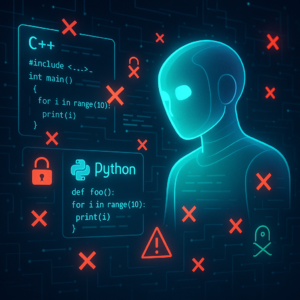Chain of Thought – The Ultimate Guide
- By Stephen Smith
- In Blog
- 0 comment

Chain of Thought (CoT) prompting is one of the most effective prompting techniques (Vatsal, S., & Dubey, H. (2024). “A Survey of prompt engineering methods in large language models for different NLP tasks”). This approach is transforming how we interact with large language models, enabling them to tackle complex problems with unprecedented clarity and effectiveness. Let’s explore what CoT prompting is, why it matters, and how you can leverage it in your AI applications.
Understanding Chain-of-Thought Prompting
At its core, CoT prompting is about teaching AI models to show their work. Instead of simply providing an input and expecting an output, we guide the model through a step-by-step reasoning process. This method allows the AI to break down complex problems into manageable steps, much like a human would.
The key benefits of CoT prompting include:
- Enhanced problem-solving capabilities for multi-step tasks
- Increased transparency in AI decision-making
- Improved performance on a wide range of reasoning tasks
- The ability to use off-the-shelf models without fine-tuning
When to Use Chain-of-Thought Prompting
CoT prompting shines in scenarios where:
- The task requires multi-step reasoning
- You’re working with a large language model (typically 100B+ parameters)
- Standard prompting yields suboptimal results
Implementing Chain-of-Thought Prompting
To effectively use CoT prompting, follow these steps:
- Identify your task and gather example problems
- For each example, write out the step-by-step reasoning process
- Format your prompt with these detailed examples
- Encourage the model to “think step-by-step” when querying
Here’s an example of a well-structured CoT prompt for mathematical reasoning:
You are an expert mathematical reasoning system. Your task is to solve math word problems step-by-step, showing all your work clearly. Always approach problems methodically, breaking them down into logical steps.
Here are some examples of how to solve problems:
Problem 1: A bakery sold 136 cakes on Saturday and 98 cakes on Sunday. If each cake costs $24, how much money did they make over the weekend?
Solution 1:
1. Understand the given information:
* Saturday sales: 136 cakes
* Sunday sales: 98 cakes
* Price per cake: $24
2. Calculate total number of cakes sold:
* Total cakes = Saturday sales + Sunday sales
* Total cakes = 136 + 98 = 234 cakes
3. Calculate total money made:
* Total money = Total cakes × Price per cake
* Total money = 234 × $24 = $5,616
Therefore, the bakery made $5,616 over the weekend.
[Additional example problem and solution]
Now, please solve the following new problem using the same step-by-step approach:
[New problem for the AI to solve]
Practical Applications for Developers
CoT prompting is particularly valuable for developers building applications that require consistent, step-by-step problem-solving across varied inputs. Some key areas where this technique excels include:
- Educational tools (e.g., math problem solvers, coding tutors)
- Business analytics (e.g., financial modeling, data interpretation)
- Decision support systems (e.g., medical diagnosis assistants, legal analysis tools)
- Customer service (e.g., troubleshooting guides, complex query resolution)
By implementing a robust system prompt that enforces a consistent problem-solving approach, developers can create more reliable, explainable, and user-friendly AI-powered applications.
Conclusion
Chain-of-thought prompting represents a significant leap forward in our ability to harness the power of large language models. By guiding these models through step-by-step reasoning processes, we’re opening up new possibilities in AI problem-solving and decision-making.
As you experiment with CoT prompting in your own projects, remember that the key lies in clear, structured examples that demonstrate the thought process you want the AI to emulate. With practice and refinement, you’ll be able to unlock new levels of AI performance and create more sophisticated, transparent AI systems.
Source and original paper for further reading: https://arxiv.org/pdf/2201.11903
Check out our blog on Program of Thought Prompting.
You may also like

Unraveling LLMs: Can AI Really Debug and Guard Your Code?
- 30 August 2025
- by Stephen Smith
- in Blog



